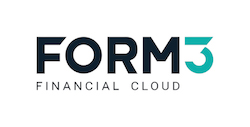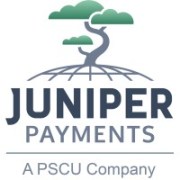2023 stands out as a banner year for instant payments.
The FedNow® Service became the newest rail in the United States, closing 2023 with more than 300 financial institutions signing on and using the instant payment network. And The Clearing House’s RTP® Network, which has been operational for more than six years, came into the summer having crossed a significant milestone with more than half a billion instant payments, cumulatively, with more than 350 participating FIs.
The use cases will proliferate as more banks sign on and as more businesses find that consumers are demanding speedier fund flows. In the comments that follow, 17 executives with a front-row seat to the continued rise of instant payments weigh in on the trends that will evolve in the near term — and what the long-term roadmap looks like too.
Looking for Critical Mass
 Ingo Money CEO Drew Edwards said, “I’m going to bet that 2024 is a tipping point, thanks to FedNow.” But market momentum cannot be sustained unless there’s connectivity between the broad range of payments rails — legacy and new rails alike — in mix-and-match fashion depending on different accounts and inbound and outbound flows, Edwards said.
Ingo Money CEO Drew Edwards said, “I’m going to bet that 2024 is a tipping point, thanks to FedNow.” But market momentum cannot be sustained unless there’s connectivity between the broad range of payments rails — legacy and new rails alike — in mix-and-match fashion depending on different accounts and inbound and outbound flows, Edwards said.
 “We have a lot of people who want to receive instantly. But not a lot of people who want to send instantly,” said Doug Brown, president and general manager at NCR Voyix, “There needs to be a value proposition on both sides of the coin.”
“We have a lot of people who want to receive instantly. But not a lot of people who want to send instantly,” said Doug Brown, president and general manager at NCR Voyix, “There needs to be a value proposition on both sides of the coin.”
 Jim Colassano, senior vice president of RTP product development at The Clearing House, echoed the sentiment, saying, “The demand is definitely there. And what we need to do is start providing the supply.”
Jim Colassano, senior vice president of RTP product development at The Clearing House, echoed the sentiment, saying, “The demand is definitely there. And what we need to do is start providing the supply.”
 Michael Haney, head of product strategy at Galileo Financial Technologies, said that consumers are eager to pay bills on the due date, eliminating the uncertainties associated with traditional payment methods. Peer-to-peer payments, pay-by-bank at merchants and faster account-to-account transfers between different banks are gaining traction.
Michael Haney, head of product strategy at Galileo Financial Technologies, said that consumers are eager to pay bills on the due date, eliminating the uncertainties associated with traditional payment methods. Peer-to-peer payments, pay-by-bank at merchants and faster account-to-account transfers between different banks are gaining traction.
Businesses, too, are exploring the benefits of instant payments for bill payments, customer refunds, employee payments and the emerging gig economy.
Ecosystems Evolving — and Merchants and Consumers Are Earliest Beneficiaries
First things first. Although in concept the instant payment is simple and direct on its face, the ecosystems and connections tying various stakeholders together are intricate and require some rewiring of processes and technologies.
 “Education is going to be key for all the players in the payment chain,” said Moa Agrell, senior banking partnerships manager at Trustly, as providers take stock of what they need to do to be ready for new waves of demand.
“Education is going to be key for all the players in the payment chain,” said Moa Agrell, senior banking partnerships manager at Trustly, as providers take stock of what they need to do to be ready for new waves of demand.
As instant payments become more prevalent, it is highly likely that the business models of FIs and nonbank enterprises might evolve in-step with the money movement option’s growth and adoption.
Agrell emphasized the need for FIs to understand the operational changes required for instant payments. From staffing needs to regulatory implications, FIs must adapt to the 24/7/365 nature of instant payments.
The plumbing, so to speak, remains a key consideration.
 “A lot of instant payments is about moving toward this modern experience of being able to make a transaction and receive the money in real time, as one does with everything else in their life. But the issue is first we need the infrastructure,” said Sean Kiewiet, chief strategy officer and co-founder of Priority Technology Holdings.
“A lot of instant payments is about moving toward this modern experience of being able to make a transaction and receive the money in real time, as one does with everything else in their life. But the issue is first we need the infrastructure,” said Sean Kiewiet, chief strategy officer and co-founder of Priority Technology Holdings.
Collaboration between domestic instant payment networks and international instant payment systems can streamline the process of transferring funds across borders. By eliminating the need for multiple networks and platforms, instant payments can simplify cross-border transactions and reduce costs for businesses and consumers alike, Kieweit continued.
“If I can just go through your network and go anywhere in the world, that’s the right answer,” he said.
Interoperability Is a Goal
 Bridget Hall, leader of real-time payments at ACI Worldwide, said it will take some time for the disparate systems to be stitched together.
Bridget Hall, leader of real-time payments at ACI Worldwide, said it will take some time for the disparate systems to be stitched together.
“It’s very common to see domestic schemes go live [and] get established a bit before starting to [connect] to real-time [networks] in other countries,” she noted, referencing Immediate Cross-Border Payments, an ongoing pilot program launched by EBA Clearing, SWIFT and TCH, with banking support from the U.S., the United Kingdom and Western European countries.
But even as interoperability may be a ways off, there will be a groundswell of instant payment use cases in the U.S.
 Hicham Oudghiri, co-founder and CEO of Enigma Technologies, took stock of the various players spanning merchants, consumers, FIs and businesses. The most notable tailwinds, he said, will come as “the merchants are going to be the ones who are putting in place incentives for wider adoption.” The incentives might include discounting the prices charged for products and services if customers elect to pay with instant methods. That option may prove especially appealing to online platforms, he said, adding that “from a business model perspective, the merchant really wins.”
Hicham Oudghiri, co-founder and CEO of Enigma Technologies, took stock of the various players spanning merchants, consumers, FIs and businesses. The most notable tailwinds, he said, will come as “the merchants are going to be the ones who are putting in place incentives for wider adoption.” The incentives might include discounting the prices charged for products and services if customers elect to pay with instant methods. That option may prove especially appealing to online platforms, he said, adding that “from a business model perspective, the merchant really wins.”
 Dave Scola, CEO of Form3, told PYMNTS that payroll offers a prime example. We’re used to being paid every two weeks, usually by ACH. But the emergence of the gig economy in recent years, and the volatility in payments — which can range from daily to a per-project basis — has offered a new use case for instant payments.
Dave Scola, CEO of Form3, told PYMNTS that payroll offers a prime example. We’re used to being paid every two weeks, usually by ACH. But the emergence of the gig economy in recent years, and the volatility in payments — which can range from daily to a per-project basis — has offered a new use case for instant payments.
 Andy McHale, senior director of product and market strategy at Spreedly, predicted that “you’re going to see a lot of centralized experiences,” as customers can go online to see all of their cards and accounts, across all providers, in one place as users can move funds from place to place without friction.
Andy McHale, senior director of product and market strategy at Spreedly, predicted that “you’re going to see a lot of centralized experiences,” as customers can go online to see all of their cards and accounts, across all providers, in one place as users can move funds from place to place without friction.
“There’s absolutely room for [instant payments] to grow, and it’s no flash in the pan,” McHale told PYMNTS. “There will be a mix of interesting payment options for consumers going forward.”
 “The levers that need to be pulled to move [instant payment] services forward on the consumer side really come down to a reduction in service fees,” said Ryan Dew, global head of product at i2c, as FIs and financial service providers interact with end customers. Positioning instant payment services as personal finance management tools can incentivize consumers by minimizing late charges on bill payments, Dew said.
“The levers that need to be pulled to move [instant payment] services forward on the consumer side really come down to a reduction in service fees,” said Ryan Dew, global head of product at i2c, as FIs and financial service providers interact with end customers. Positioning instant payment services as personal finance management tools can incentivize consumers by minimizing late charges on bill payments, Dew said.
 Shaunt Sarkissian, founder and CEO at AI-ID, said consumers are already primed to look for speed in their everyday financial lives, as peer-to-peer payment systems and platforms like Zelle have created an expectation for instantaneous transactions, setting the stage for broader adoption.
Shaunt Sarkissian, founder and CEO at AI-ID, said consumers are already primed to look for speed in their everyday financial lives, as peer-to-peer payment systems and platforms like Zelle have created an expectation for instantaneous transactions, setting the stage for broader adoption.
Beyond the consumer-facing applications, he said, the real-time payments opportunity is most prevalent in business and B2B transactions. “If I get that money right away, I can start earning interest on it … immediacy has an impact for businesses and allows faster, even different, business models,” Sarkissian said.
 Ruben Salazar, senior vice president and global head of Visa Direct, told Karen Webster that the transition from traditional, ACH transactions toward faster payments can be a catalyst for more digital inclusion, as there are still billions of unbanked individuals and households around the globe (and about 4% of households are unbanked in the U.S.), without debit cards, savings accounts or checking accounts.
Ruben Salazar, senior vice president and global head of Visa Direct, told Karen Webster that the transition from traditional, ACH transactions toward faster payments can be a catalyst for more digital inclusion, as there are still billions of unbanked individuals and households around the globe (and about 4% of households are unbanked in the U.S.), without debit cards, savings accounts or checking accounts.
“This is the ultimate goal as we facilitate the participation of more and more consumers and businesses in a larger, vibrant, digital economy,” he said.
Fraud Remains a Concern
The conventional wisdom is that faster payments translates into faster fraud, and the executives we queried said that a proactive approach — and robust security measures — are going to be the best lines of defense.
 “The user experience needs to be seamless and easy to use. If we’re going to make something faster, then the assumption is that it is going to be better for the consumer,” Mike Storiale, vice president of innovation development at Synchrony, said, adding that “ultimately, we need education and trust for the consumers and for the businesses about not only the benefits of instant payments around speed, the convenience, and security, but also how to mitigate fraud and make sure that everyone is staying safe in an evolved ecosystem.” Collaboration and adherence to common standards and protocols across the financial ecosystem are also essential for effective fraud detection in real time, Storiale said.
“The user experience needs to be seamless and easy to use. If we’re going to make something faster, then the assumption is that it is going to be better for the consumer,” Mike Storiale, vice president of innovation development at Synchrony, said, adding that “ultimately, we need education and trust for the consumers and for the businesses about not only the benefits of instant payments around speed, the convenience, and security, but also how to mitigate fraud and make sure that everyone is staying safe in an evolved ecosystem.” Collaboration and adherence to common standards and protocols across the financial ecosystem are also essential for effective fraud detection in real time, Storiale said.
 Jon Budd, CEO of Juniper Payments, a PSCU company, said that artificial intelligence and machine learning will be potent weapons in breaking down and analyzing the risk across different silos of payments, from ACH to credit cards to debit cards. They will also help in examining individual accounts and patterns of behavior to identify anomalies.
Jon Budd, CEO of Juniper Payments, a PSCU company, said that artificial intelligence and machine learning will be potent weapons in breaking down and analyzing the risk across different silos of payments, from ACH to credit cards to debit cards. They will also help in examining individual accounts and patterns of behavior to identify anomalies.
“This allows us a little bit of time to create some friction to make sure that payments are going where they are supposed to go,” Budd said.
 Mollie Curran, payments lead at Plaid, said risks are threefold. There’s identity risk — that merchants, banks and platforms can trust that someone is who they say they are. Solidifying that trust means ensuring that know your customer systems are connected to the rest of the commerce ecosystem, she said, and Plaid’s own KYC solutions allow data to be shared among stakeholders to identify risky consumers. Account risk, she said, mandates that verification and monitoring are robust. And finally, there remains transaction risk, which involves making sure the receiver of funds is legitimate as well.
Mollie Curran, payments lead at Plaid, said risks are threefold. There’s identity risk — that merchants, banks and platforms can trust that someone is who they say they are. Solidifying that trust means ensuring that know your customer systems are connected to the rest of the commerce ecosystem, she said, and Plaid’s own KYC solutions allow data to be shared among stakeholders to identify risky consumers. Account risk, she said, mandates that verification and monitoring are robust. And finally, there remains transaction risk, which involves making sure the receiver of funds is legitimate as well.
 Irfan Ahmad, managing director and head of U.S. payments GTS at Bank of America, said banks are focused on ensuring safety and security across all transactions. In the U.S., instant payments still exist only as “credit push” fund flows.
Irfan Ahmad, managing director and head of U.S. payments GTS at Bank of America, said banks are focused on ensuring safety and security across all transactions. In the U.S., instant payments still exist only as “credit push” fund flows.
“The originator [is] in full control of when that payment goes out,” Ahmad said. But as “we start seeing more and more back-office systems for corporates move toward APIs, you’re going to have wires, ACH payments and instant payments all coming across APIs, and that’s going to give us the ability to start [looking] holistically at all the tools we have in place to mitigate risk.”

 “We have a lot of people who want to
“We have a lot of people who want to  Jim Colassano
Jim Colassano Michael Haney
Michael Haney “Education is going to be key for all the players in the
“Education is going to be key for all the players in the  “A lot of instant payments is about moving toward this modern experience of being able to make a transaction and receive the money in real time, as one does with everything else in their life. But the issue is first we need the
“A lot of instant payments is about moving toward this modern experience of being able to make a transaction and receive the money in real time, as one does with everything else in their life. But the issue is first we need the 

 Dave Scola
Dave Scola Andy McHale
Andy McHale “The levers that need to be pulled to move [instant payment] services forward on the consumer side really come down to a reduction in service fees,” said
“The levers that need to be pulled to move [instant payment] services forward on the consumer side really come down to a reduction in service fees,” said  Shaunt Sarkissian
Shaunt Sarkissian Ruben Salazar
Ruben Salazar “The user experience needs to be seamless and easy to use. If we’re going to make something faster, then the assumption is that it is going to be better for the consumer,”
“The user experience needs to be seamless and easy to use. If we’re going to make something faster, then the assumption is that it is going to be better for the consumer,”  Jon Budd
Jon Budd
 Irfan Ahmad
Irfan Ahmad